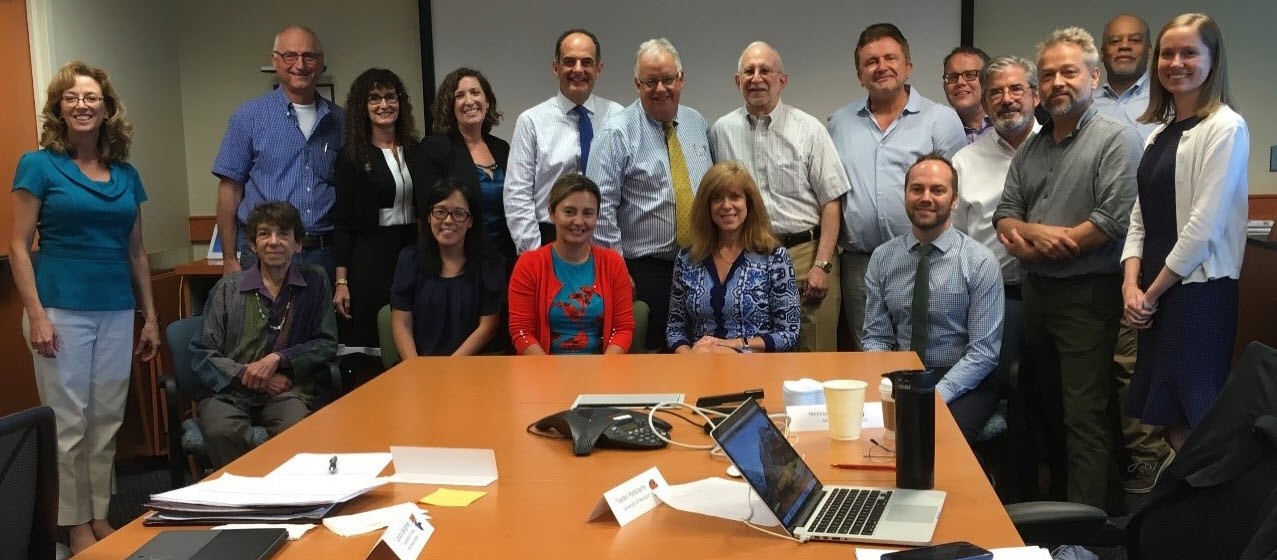Researchers from many fields offer perspectives
People range from being comfortable to fearful when it comes to visiting the dentist. Being afraid enough to skip basic care often results in more cavities and poorer oral health.
To explore the problem, NIDCR convened a workshop, “Addressing Fear and Anxiety: Steps Toward Accelerating Progress and Building a Cumulative Science.” The meeting was held recently in Bethesda and drew researchers from dentistry, psychology, and psychiatry.
The participants discussed interventions that might help patients with dental anxieties. They also considered what could be learned from the behavioral sciences and mental health and addressed challenges to integrating fear-reducing interventions into dental care. NIDCR will use this input to set research directions.
“Given the wide range of potential intervention targets to address dental fear and anxiety, a challenge is determining the logical next steps for research in this area,” said Dr. Melissa Riddle, director of NIDCR’s Behavioral and Social Sciences Research Program.
An estimated 10% to 20% of US adults experience dental fear, and preventing anxiety in this population is a priority, the panel said. The participants noted that there are tools to help the “haters, but goers”—people who show up despite their aversion. But dentists can’t help people who never appear. There was a consensus that advancing oral health on a broad scale will require a wider public conversation to counter negative views of dental visits.
The attendees agreed that preventing fear should start early, perhaps before a child’s first dental visit. Although researchers know less than they would like to about how children develop anxiety, they do know that children pick up on the anxiety of their caregivers. Studies show that the way caregivers talked with children about medical and dental procedures shaped children’s memories of how distressing those procedures were.
The extent of anxiety predicts how cooperative children will be. Creating positive experiences builds positive associations for patients. One participant, a dentist who works with children with special needs, described how his practice draws on Snoezelen, a Dutch approach to designing a space that feels comfortable, safe, and fun. His practice’s space includes a trampoline for jumping off nervous energy and tailored sensory environments, where lights, sounds, textures, and experiences are designed specifically for a patient’s needs. Children are allowed multiple visits to use equipment or to practice strategies that help them manage their anxieties and acclimate to the dentist’s office. This approach makes it possible to treat children who otherwise might not get dental care, he said. (People with special needs have worse dental health and more untreated caries than the general population.)
The participants from mental health fields described proven treatments for anxiety and fear that could be used in dental settings. The psychologists noted cognitive behavioral therapy’s success in helping people face situations that scare them by reducing the fear-inducing qualities of those experiences over time. Virtual-reality exposure therapy, which was highlighted, exposes patients to virtual simulations of fear-invoking situations, and, with a therapist’s guidance, patients learn to overcome those feelings. It has been used to successfully treat people who are afraid of heights or flying and to help combat veterans diagnosed with post-traumatic stress disorder.
In addition to behavioral methods, there is also a place for pharmacological interventions to manage anxiety in the short term, the researchers said. Behavioral approaches seem to provide the advantage of long-lasting results, and they give patients coping skills that are transferable to other settings. Concerns were raised about access to behavioral treatments in underserved settings, highlighting the need for equity in dental fear intervention research.
Workshop participants emphasized the need for the right intervention for the right person at the right time, a goal that is hampered by the lack of universal assessment standards for fear. A potential solution is to include assessments that specify fears on patient intake forms. Studies are being conducted to learn whether smart phones and iPads could be used to deliver pre-treatment interventions at home or in the dentist’s office, and early results are promising.
Integrating anxiety treatments into dental practices poses logistical hurdles. Questions were raised about work flow and care roles. Who in the office—the hygienist, dentist, or someone else—should administer interventions? How could technology best be used to deliver behavioral therapies?
There is also the issue of training. While some participants suggested that dental students receive more training in patient communications or mental health, they also noted that the heavy coursework and clinical requirements faced by dental students might make extra training a challenge.
—By Anna Maria Gillis
Adapted from the NIH RECORD, October 4, 2019



